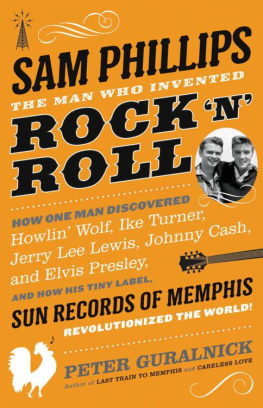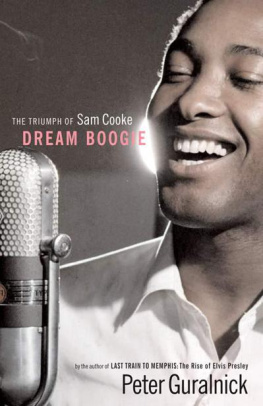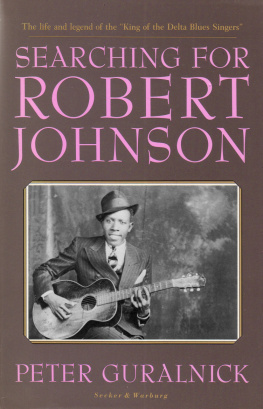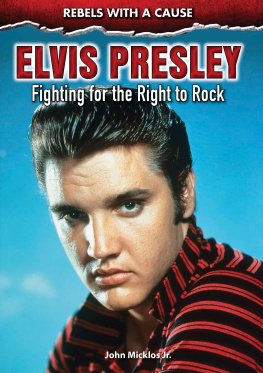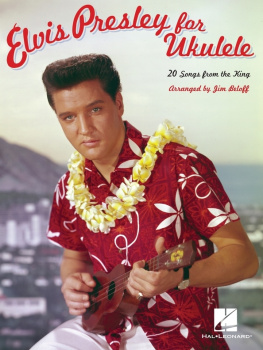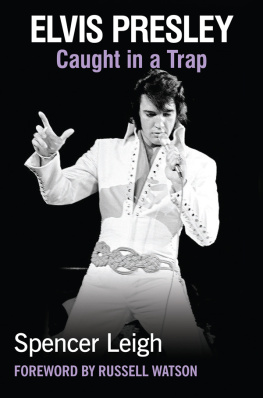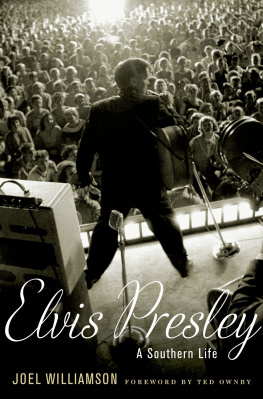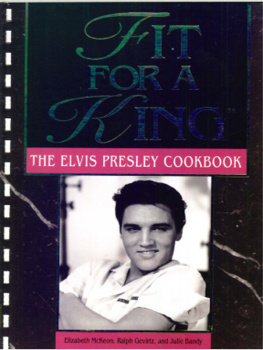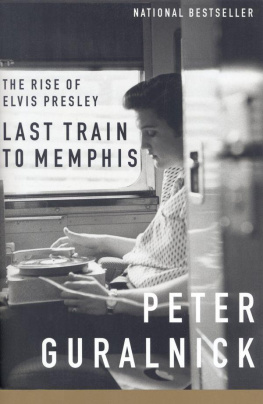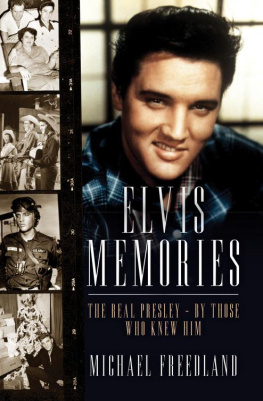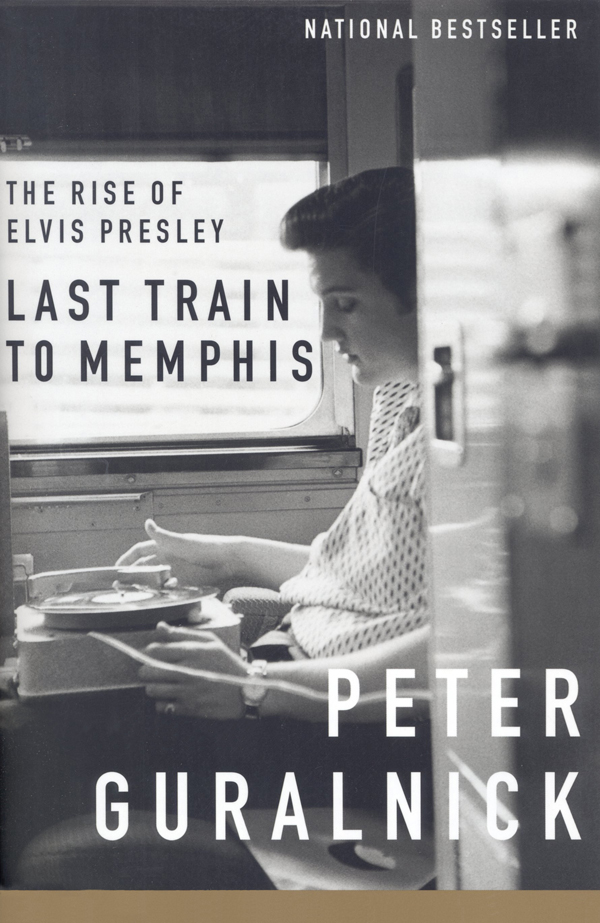In accordance with the U.S. Copyright Act of 1976, the scanning, uploading, and electronic sharing of any part of this book without the permission of the publisher constitute unlawful piracy and theft of the authors intellectual property. If you would like to use material from the book (other than for review purposes), prior written permission must be obtained by contacting the publisher at permissions@hbgusa.com. Thank you for your support of the authors rights.
Copyright 1994 by Peter Guralnick
Cover design by Michael Ian Kaye. Cover photograph Alfred Wertheimer / courtesy of Staley-Wise Gallery, New York. Cover copyright 2012 Hachette Book Group, Inc.
All rights reserved. In accordance with the U.S. Copyright Act of 1976, the scanning, uploading, and electronic sharing of any part of this book without the permission of the publisher is unlawful piracy and theft of the authors intellectual property. If you would like to use material from the book (other than for review purposes), prior written permission must be obtained by contacting the publisher at permissions@hbgusa.com. Thank you for your support of the authors rights.
Little, Brown and Company
Hachette Book Group
237 Park Avenue
New York, NY 10017
littlebrown.com
twitter.com/littlebrown
peterguralnick.com
First e-book edition: December 2012
The publisher is not responsible for websites (or their content) that are not owned by the publisher.
The Hachette Speakers Bureau provides a wide range of authors for speaking events. To find out more, go to hachettespeakersbureau.com or call (866) 376-6591.
All photographs are copyrighted by the photographer and/or owner cited, all rights reserved.
ISBN 978-0-316-20677-8
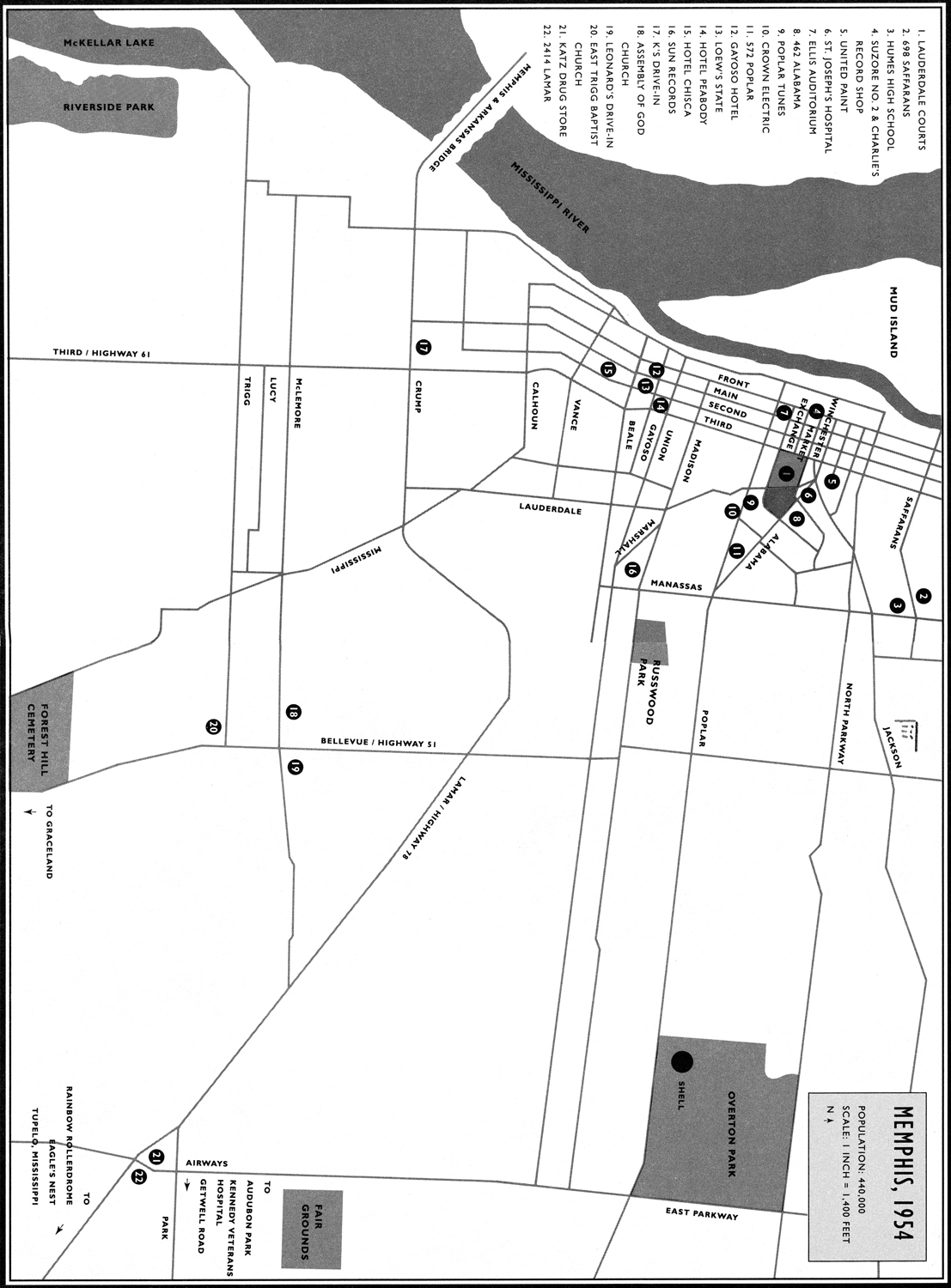
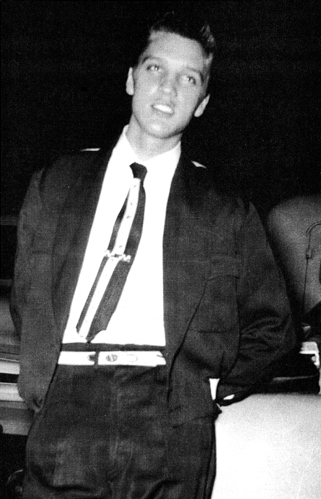
For my mother and father and for Alexandra

Biography meant a book about someones life. Only, for me, it was to become a kind of pursuit, a tracking of the physical trail of someones path through the past, a following of footsteps. You would never catch them; no, you would never quite catch them. But maybe, if you were lucky, you might write about the pursuit of that fleeting figure in such a way as to bring it alive in the present.
Richard Holmes, Footsteps: Adventures of a Romantic Biographer
I FIRST WROTE about Elvis Presley in 1967. I did so because I loved his music and I felt that it had been unjustly ridiculed and neglected. I was not writing about movies, image, or popularity. I was writing about someone whom I thought of as a great blues singer (I might today amend the term to heart singer, in the sense that he sang all the songs he really cared aboutblues and gospel and even otherwise inexplicably sentimental numberswithout barrier or affectation) and who I imagined must conceive of himself in the same way. In that same spirit of barrierlessness I sent Elvis a copy of the review at his address, 3764 Highway 51 South (later renamed Elvis Presley Boulevard) in Memphis, and I got a printed Christmas card in reply.
I wrote about him a number of times over the years, seeking in one way or another to rescue him from both his detractors and admirers. What I wrote was based on passionate listening, research, and interviewing, and, of course, the kind of speculation that we inevitably apply to anything, or anyone, whom we admire from a distant shore. I wouldnt altogether disown anything that I wrote, though in retrospect I might correct a good deal of its perspective. But I dont know if I ever thought about the real Elvis Presley until I was driving down McLemore Avenue in South Memphis one day in 1983, past the old Stax studio, with a friend named Rose Clayton. Rose, a native Memphian, pointed out a drugstore where Elvis cousin used to work. Elvis used to hang out there, she said; he would sit at the soda fountain, drumming his fingers on the countertop. Poor baby, said Rose, and something went off in my head. This wasnt Elvis Presley; this was a kid hanging out at a soda fountain in South Memphis, someone who could be observed, just like you or me, daydreaming, listening to the jukebox, drinking a milk shake, waiting for his cousin to get off work. Poor baby.
I didnt come to the book itself for several years after that, but this was the vision that sustained it. When I finally decided to write the book, I had one simple aim in mindat least it seemed simple to me at the start: to keep the story within real time, to allow the characters to freely breathe their own air, to avoid imposing the judgment of another age, or even the alarums that hindsight inevitably lends. That was what I wanted to do, both because I wanted to remain true to my charactersreal-life figures whom I had come to know and like in the course of both my travels and researchand because I wanted to suggest the dimensions of a world, the world in which Elvis Presley had grown up, the world which had shaped him and which he in turn had unwittingly shaped, with all the homeliness and beauty that everyday life entails.
Discovering the reality of that world was something like stepping off the edge of my own. The British historian Richard Holmes describes the biographer as a sort of tramp permanently knocking at the kitchen window and secretly hoping he might be invited in for supper. Holmes is presumably alluding to the researchers attempt to penetrate the recesses of history, but he might as well be describing the literal truth. If one cannot recognize ones status as an outsider, if I were not able to laugh at the comic contretemps in which I have often found myself over the years, then I would be lacking in the humility necessary for the task. But if one were not vain enough, on the other hand, to think it possible to make sense of the mass of random detail that makes up a life, if one did not imagine oneself capable somehow of the most diverse explorations, divagations, and transcendental leaps, then one would never seek to tell the story. The moment one begins to investigate the truth of the simplest facts which one has accepted as true, wrote Leonard Woolf in his autobiography, it is as though one had stepped off a firm narrow path into a bog or a quicksandevery step one takes one steps deeper into the bog of uncertainty. And it is that uncertainty which must be taken as both an unavoidable given and the only real starting point.
For this book I interviewed hundreds of firsthand participants. To my great joy, and not incidental distraction, I discovered worlds within worlds: the world of quartet singing; the pioneering spirit of postWorld War II radio; the many worlds of Memphis (which I might have thought I already knew); the carnival world of self-invention and self-promotion out of which Colonel Thomas A. Parker emerged; the small-time dreams of a music industry that had not yet defined itself; the larger dreams of an art form that had not yet been explored. I have tried to suggest these worlds, and the men and women who peopled them, with a respect for the intricacy, complexity, and integrity of their makeup, but, of course, one can only suggest. As for the central figure, I have tried to convey his complexity and irreducibility as well. This is an heroic story, I believe, and ultimately perhaps a tragic one, butlike any of our lives and charactersit is not all of one piece, it does not lend itself to one interpretation exclusively, nor do all its parts reflect anything that resembles an undifferentiated whole. To say this, I hope, is not to throw up ones hands at the impossibility of the task; it is, simply, to embrace the variousness, and uniqueness, of human experience.


